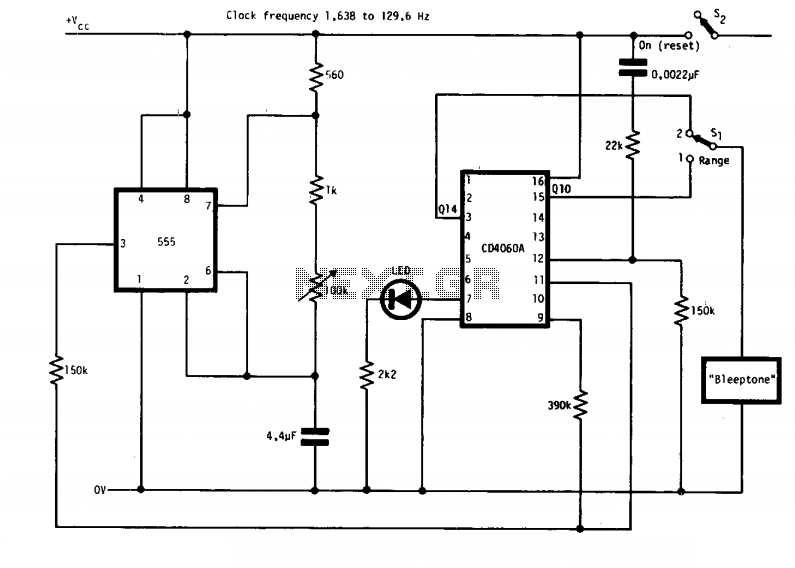
Human infrared thermal release alarm

The human infrared thermal release alarm can detect the infrared radiation emitted by the human body at any time of the day or night, triggering both sound and light alarms. This device is particularly suitable for electronic security applications. The operational principle involves a circuit that utilizes an imported integrated circuit (IC), a general-purpose sensor control circuit, and a high input impedance operational amplifier.
The human infrared thermal release alarm is designed to enhance security by detecting the presence of individuals through their emitted infrared radiation. The core of the system is an integrated circuit that processes signals from a passive infrared (PIR) sensor. This sensor is sensitive to changes in infrared levels, which occur when a person enters its detection range.
The operational amplifier in the circuit serves to amplify the weak signals received from the PIR sensor. The high input impedance of the operational amplifier ensures that it does not load the sensor output, allowing for accurate detection of even minimal infrared variations. The amplified signal is then fed to a microcontroller or logic circuit that interprets the signal and determines if it exceeds a predefined threshold, indicating the presence of a human.
Once the presence is confirmed, the system activates both an audible alarm and visual indicators, such as LEDs. This dual alert mechanism serves to notify nearby individuals of a potential security breach. The alarm can be configured for various settings, including sensitivity adjustments and alarm duration, making it adaptable for different environments and security needs.
For installation, the device should be positioned to maximize its field of view while minimizing false alarms from environmental factors such as pets or moving objects. Proper calibration and testing are essential to ensure reliable operation in the intended application. Overall, the human infrared thermal release alarm presents a robust solution for enhancing security through effective human detection.Human infrared thermal release alarm can receive the heat releasing infrared ray issued by the body during the day or night, then it willgive the sound and light alarm. It is ideal for electronic guard. Working principle: The circuit uses imported IC, general-purpose sensor control circuit, high input impedance operational amplifier, it consists of the tim..
🔗 External reference
The human infrared thermal release alarm is designed to enhance security by detecting the presence of individuals through their emitted infrared radiation. The core of the system is an integrated circuit that processes signals from a passive infrared (PIR) sensor. This sensor is sensitive to changes in infrared levels, which occur when a person enters its detection range.
The operational amplifier in the circuit serves to amplify the weak signals received from the PIR sensor. The high input impedance of the operational amplifier ensures that it does not load the sensor output, allowing for accurate detection of even minimal infrared variations. The amplified signal is then fed to a microcontroller or logic circuit that interprets the signal and determines if it exceeds a predefined threshold, indicating the presence of a human.
Once the presence is confirmed, the system activates both an audible alarm and visual indicators, such as LEDs. This dual alert mechanism serves to notify nearby individuals of a potential security breach. The alarm can be configured for various settings, including sensitivity adjustments and alarm duration, making it adaptable for different environments and security needs.
For installation, the device should be positioned to maximize its field of view while minimizing false alarms from environmental factors such as pets or moving objects. Proper calibration and testing are essential to ensure reliable operation in the intended application. Overall, the human infrared thermal release alarm presents a robust solution for enhancing security through effective human detection.Human infrared thermal release alarm can receive the heat releasing infrared ray issued by the body during the day or night, then it willgive the sound and light alarm. It is ideal for electronic guard. Working principle: The circuit uses imported IC, general-purpose sensor control circuit, high input impedance operational amplifier, it consists of the tim..
🔗 External reference





